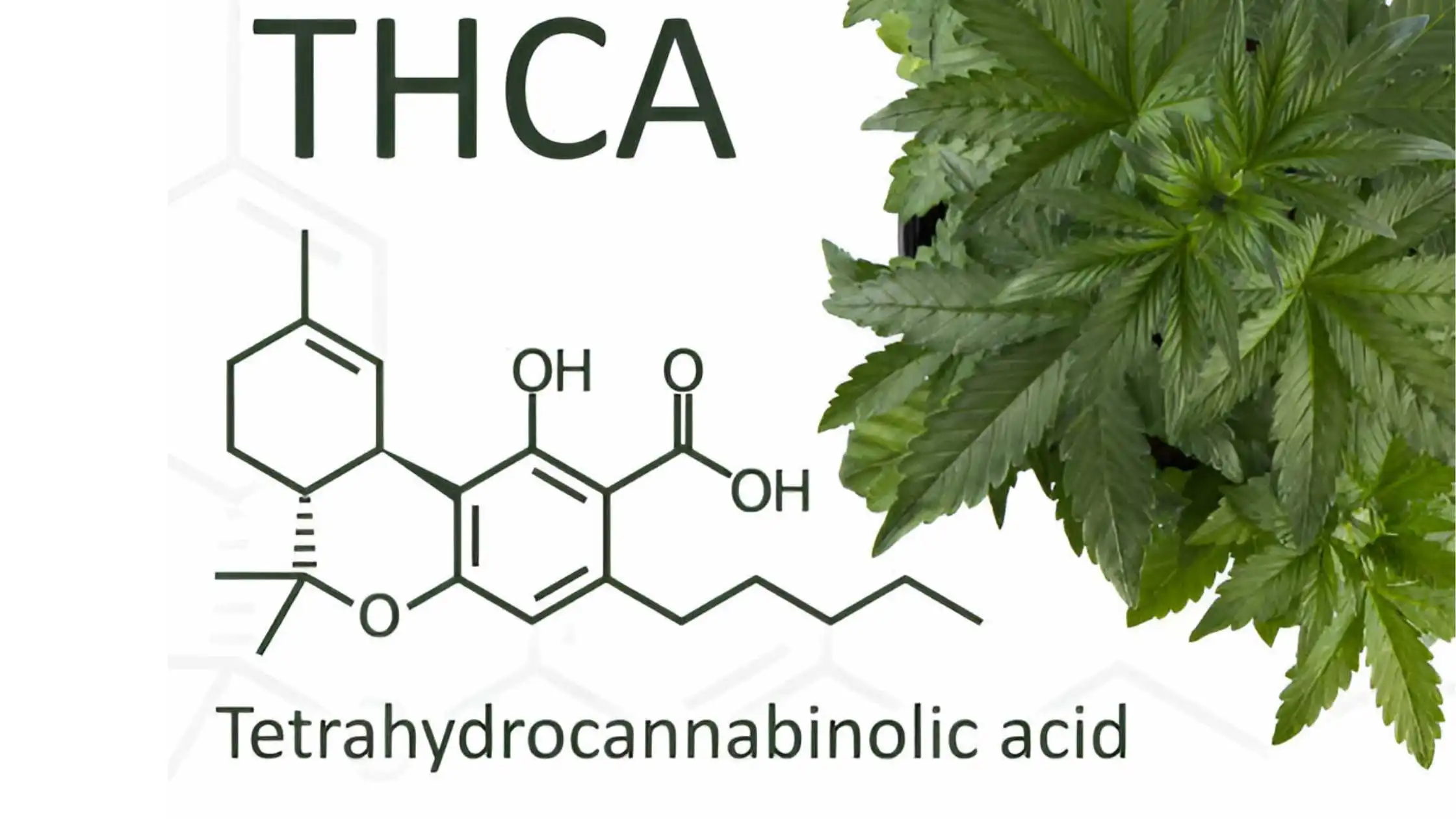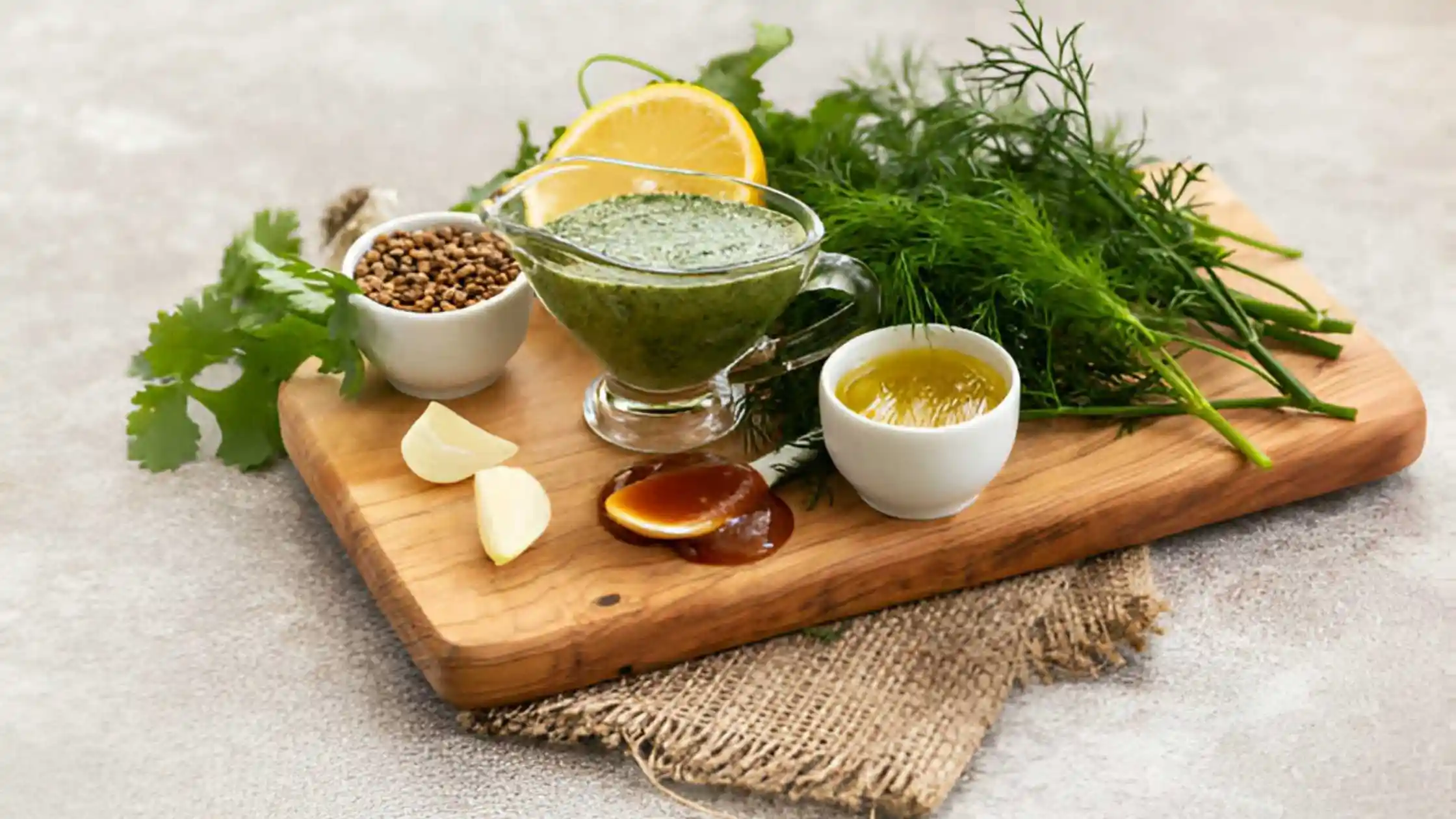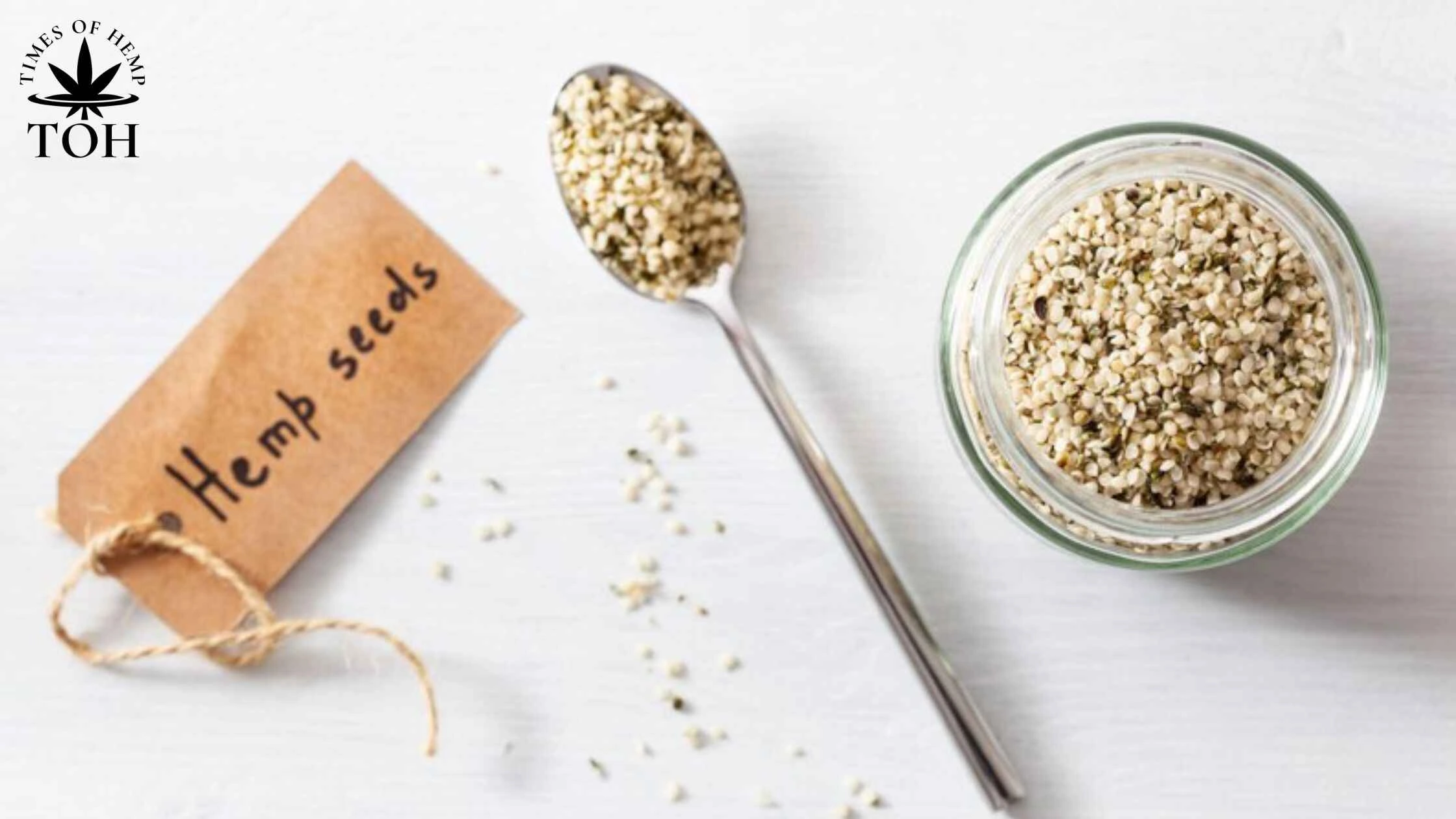Why would you keep your cannabis raw? Well, if you wanted to experience the potential benefits of THCa, you would. But let’s take a closer look at this cannabinoid and discover if there’s anything to back up the hype this cannabinoid has been receiving lately. If you’re anything like me, you’re a little suspicious of the internet and its hyped-up facts. So, to discover the truth about THCa, keep reading along with me.
Have you heard of THCa? It’s a cannabis compound that’s been shown to have therapeutic effects but has a lot less research behind it than THC. I first heard about THCa when I went to a dispensary. The budtender said it was “the good cannabinoid” and had pain-reducing properties. I was intrigued, so I researched independently (as you do) and found that THCa may help treat inflammatory conditions like arthritis. I thought it would be fun to jump into the weeds a little bit and learn about THCa, so let’s talk about what this cannabinoid is, how it differs from THC, how to use it, and how to get more out of your cannabis experience!
What is THCa, and What are the Benefits?
Imagine you’re a cannabis researcher (or an adventurous eater if you want to spice up the image). You’re looking at a fresh cannabis bud plucked from a lovely Colorado grow. You cut it open, and tiny, white crystals look like salt crystals on the inside. They’re slightly fluffy and smell… well, like weed. These tiny crystals are THCa or tetrahydrocannabinolic acid. It’s one of over 100 cannabinoids found in cannabis, and it’s non-intoxicating. We’ve probably all heard of THC by now. It’s the only cannabinoid most people know about (except CBD). Still, while they may sound similar, THC and THCa have very different properties. Unlike THC, THCa is not psychoactive. THCa is not even active until it converts to THC when heated up to a certain point (a process known as decarboxylation). When you smoke or vaporize flower, this happens automatically—it’s decarbing—but when you eat your cannabis in some other form, like edibles or tinctures that haven’t been heated enough to ‘activate’ them yet, you don’t get nearly as much benefit from THCa.
What is tetrahydrocannabinolic acid (THCa)?
THCa, short for tetrahydrocannabinolic acid, is a cannabis compound that shows therapeutic potential. THCa isn’t just found in raw and live cannabis—it’s also the only chemical produced by the plant at temperatures below 118 °C (244 °F). Heat can change THCa into THC, which is why you’ll feel high after smoking or vaping flowers. If you’re not using heat and consume raw cannabis, you’re likely consuming THCa instead of THC.
First discovered in 1964, THCa has been shown to fight cancer cells, reduce anxiety and migraines, and alleviate symptoms of depression, PTSD, and Crohn’s disease.
How (and why) is THCa Beneficial for People?
THCa, or tetrahydrocannabinolic acid, is a non-psychoactive compound found in raw cannabis. It’s often overlooked by consumers and underappreciated by companies. I’m here to remind you that this isn’t just a molecule that grows in marijuana plants—it’s a non-psychoactive compound with far-reaching potential in the human body.
Here are five reasons why you should start getting more THCa in your diet:
- Protects your Neurons
Okay, so that isn’t the most Standford way of saying it, so here’s another way: THCa could be a highly effective Neuroprotective antioxidant.
When we think of antioxidants, we think of vitamin C and lemon juice. But cannabis has its antioxidant, tetrahydrocannabinol acid (THCa)
Hot off the presses is a study from 2012 that found THCa (a non-psychoactive compound in marijuana) protects against oxidative neurotoxins used to model Parkinson’s disease. The problem with Parkinson’s disease is that dopamine-producing neurons in the brain die off, contributing to disordered movement.
So, how does THCa help? It seems that THCa activates cannabinoid receptors in the brain, which are responsible for releasing dopamine. This release of dopamine helps combat the dopamine depletion that occurs in cases of Parkinson’s disease. This is excellent news for patients suffering from this debilitating condition.
However, many people will be quick to point out that most studies, including the one I just mentioned, are based on animal models. Despite basing the research on mouse cultures, the conclusion states that THCa is a compound that protects dopamine-producing neurons from dying.
CHI research also found that THCa significantly decreased specific oxidative stress markers in vitro and in vivo – a process thought to contribute to Parkinson’s disease.
This means that if you take CBD for its anti-inflammatory effects, using a product with THCa could help with some of those same issues. So, next time you’re looking for a powerful CBD product, ensure it has THCa!
- Inflammation Busting
Inflammation- is also a hot topic. People are increasingly suffering from inflammation for many reasons, but that’s another subject. The point is that THCa has demonstrated significant abilities to help fight inflammation.
In 2011, the Biological and Pharmaceutical Bulletin published a study on this subject. The study depicted THCa as being an anti-inflammatory powerhouse, and here’s why:
- THCa inhibits two enzymes that NSAID medications interact with to reduce inflammation. These two enzymes (COX-1 and COX-2) stimulate inflammation in the body and are often the culprits behind swelling, pain, and even fever. The study found that the THCa compound was incredibly influential in inhibiting the enzymes.
- Anti-nausea
If you had a grandmother like mine, you would’ve heard of all the kitchen remedies for nausea treatment. But raw cannabis juice? She omitted that one from my childhood (although she did make cannabis tea to help soothe her osteoarthritis).
How do I know if my grandmother did not know about this remedy? In 2013, the British Journal of Pharmacology published a study. Their researchers found THCa to have robust antiemetic (anti-nausea) qualities.
I’m no advocate for animal testing, but I will report the results here:
- The research team treated the rats with THCa after inducing vomiting in the rodents.
- The compound was effective in reducing vomiting in the subjects.
- The research team concluded that the THCa compound effectively reduces vomiting and nausea.
- Analgesic
In 2008, the Journal of Pharmacology and Experimental Therapeutics published a study that clearly showed THCa and THC pain-relieving properties. Here are the juicy details:
- Both cannabinoids trigger the TRPA1 receptor, a cell receptor closely linked with pain and the subsequent research on pain.
- In some contexts, an animal that doesn’t have these receptors shows minimal response to any painful stimuli. Therefore, research into pain response and sensations often includes stimulation of the TRPA1 receptor.
But wait, there (might be) more!
THC is a potent anti-inflammatory and analgesic and may also help with insomnia and spasms! Moreover, it does all this without impacting positive mood effects such as euphoria!
So, what’s the catch? As always, we’ll have to wait for more studies to substantiate the above benefits before fully understanding what THCa means for the future of cannabinoid-based medicines. While the benefits of THC are well-documented, the therapeutic effects of its acidic form (THCa) have been somewhat less explored. Not long ago, this compound was even considered useless. But it turns out that THCa has quite a lot going for it. Some patients claim that THCa is also great at treating insomnia. How can we use this information responsibly? Remember that you should discuss all new treatments and supplements with your doctor. Remember that the studies are limited, so you must keep your eyes and ears open for new studies to confirm what many patients say about this cannabinoid. I’m excited to see what happens with further research, so stay tuned.
THCa vs THC
THCa is an overlooked powerhouse that has been operating under the radar for decades. While its psychoactive cousin THC gets most of the accolades and attention, THCa deserves a closer look.
The molecule is birthed from another cannabinoid acid, cannabigerolic acid. As a stand-alone compound, THCa has many known properties: It’s thought to have anti-inflammatory, analgesic, and neuroprotective functions, and it’s an excellent antioxidant. And like THC, THCa has demonstrated healing potential for skin conditions such as acne, psoriasis, eczema, and more.
But despite these impressive claims on its behalf, THCa’s actual value may lie in its ability to protect leaves from harmful UV-B light radiation. On top of that, THCa is also thought to stimulate plant growth at low concentrations. This property could benefit growers looking to boost their yield while maintaining quality control over their plants.
THC gets you high because it binds to CB1 receptors in the brain. When THC binds to these receptors, they send signals that cause feelings of euphoria and other psychoactive effects.
THCa is non-intoxicating because it doesn’t bind well to CB1 receptors, so it doesn’t cause these effects. This may be part of why raw/live cannabis has such potent anti-inflammatory properties.
What is the Difference Between THC and THC?
Have you ever bought lab-tested cannabis? If you have, you may have noticed that the most abundant cannabinoid is either THC or THCa. THCa is a non-psychoactive cannabinoid that’s known as THC’s precursor. THCa is the raw form of THC, which has not yet been converted to an active form. You may also see it in food items like chocolate and coconuts. It serves as a defence mechanism for plants to ward off predators. In cannabis, THC is what gives the flower its sour and spicy taste.
Sure, THC and THCa may become twin siblings when THCa is heated, but what, then, why would we be making such a lengthy discourse about the cannabinoid? That’s because there is much more to the THCa cannabinoid than being the precursor to THC or the raw form of the spotlight-hogging psychoactive cannabinoid. When I first heard about THCa, I was incredibly intrigued and did a little digging.
Do you want to discover what I discovered about THCa’s properties? Come and take a look…
There aren’t many peer-reviewed studies on THCa, but here’s what we know: THCa is a non-intoxicating cannabinoid shown to be anti-inflammatory, antiemetic, and possibly neuroprotective. As the cannabis industry grows and expands, so does the amount of research on the plant’s chemical components. And since THCa is the raw, unheated form of THC, it’s only natural that health and medical researchers would be interested in its potential benefits. Some preliminary studies have been done on THCa. They suggest this cannabinoid can reduce inflammation, nausea, and pain by stimulating endocannabinoid receptors CB1 and CB2.THCa is a precursor chemical to THC, which means it converts in your body into THC when heated or exposed to UV light (like sun or heat lamps). In other words, when you smoke marijuana or cook with it at low temperatures, you preserve the THCa instead of converting it into THC.
While there isn’t enough research on THCa yet to definitively state what it can treat and with what degree of efficacy, anecdotal evidence suggests that this cannabinoid will play a pivotal role in cannabis medicine.
THCa, or tetrahydrocannabinolic acid, is a form of cannabinoid that isn’t psychoactive—it doesn’t make you high. But if you’re looking to benefit from the medical power of cannabis, THCa could be your new BFF.
When it comes to non-psychoactive forms of cannabis, THCa is the OG. THCa has been known in the medical community for decades and has been used for medical purposes for even longer. The earliest recorded use of THCa dates back to the 1840s; this is when British doctor William O’Shaughnessy first published an article on cannabis research in the West. He first identified and isolated THC and CBD in 1839, but his research on THCa piqued people’s interest in using cannabis as medicine.
THCa has been used to treat a variety of conditions over the years: epilepsy, migraines, neurological disorders, multiple sclerosis, inflammatory bowel disease, rheumatoid arthritis, diabetes (1), anxiety (2), and more (3). Today, most people use THCa in topical medicine—the compounds are applied directly to the skin surface.
How Can You Take THCa?
Tinctures are the first way people use THCa, and they’re preferred by some over raw cannabis. Wellness enthusiasts make raw cannabis work for them by grinding up the dried leaves and sprinkling them on top of their food or mixing them into smoothies. It’s not currently available in grocery stores (or at least the grocery store where I shop doesn’t carry it), but that doesn’t mean there aren’t great ways to find it. For instance, Mary’s Medicinals has a transdermal patch line that delivers THCa’s benefits right where you need them. And Present Naturals has products that work in much the same way.
Raw cannabis leaves: Some companies are offering raw leaves that have been soaked in THC or CBD. When you put these raw leaves on your tongue, like chewing tobacco, they dissolve and release their cannabinoids into your body. It’s less potent than getting it through tinctures or vaporizing because there isn’t as much dissolved in the leaf. Still, it provides an alternative for those who want to take advantage of this new cannabinoid without buying tinctures or eating gummies or brownies.
FAQ: Frequently Asked Questions
Question: Why is THCa Illegal?
Answer: THCa, or tetrahydrocannabinolic acid, is a form of THCa that does not deliver the psychoactive properties of THC. It’s one of the most abundant cannabinoids in the cannabis plant. While it’s created when the cannabis plant is still alive, it can also be isolated from dried cannabis flowers and used for different purposes. THCa is not on the list of banned substances in the United States, but it could be viewed as an analogue of THC, depending on where you live. THCa will always contain some THC because it converts to THC when heat is applied to the plant. Even though no sample of THCa can be completely free of THC, its psychoactive effects are milder than THC because THCa has a lower binding affinity for CB1 receptors.
Question: Where is THCa Found?
Answer: THCa stands for tetrahydrocannabinolic acid, and it is found in fresh, undried cannabis. It is a non-intoxicating cannabinoid (which means it doesn’t get you high). In other words, it’s not a psychoactive compound. As soon as cannabis is dried and heated up, the THC begins to decarboxylate and transform into THC. The longer it’s decarboxylated and heated up, the more THC that will be formed!
Question: What do we mean by ‘Raw Cannabis’?
Answer: Any cannabis that has not been dried, cured, or decarboxylated will be considered ‘raw’. That was a simple answer so that we will go straight into the next one right now- what does this matter? When cannabis is raw, there are high levels of cannabinoid acids present in the plant. This list of acids is the most famous- CBDa and THCa, which have demonstrated medical potential and no psychoactive effects. They are both, however, precursors to CBD and THC, respectively.
When the THCa compound is described, it will change into the psychoactive compound THC.
Question: Is THCa the Same as Delta 8?
Answer: Delta-8 THC is thought to have a variety of therapeutic effects. It may relieve anxiety, reduce pain, fight inflammation, alleviate nausea, and stimulate appetite. THCa has been shown to reduce inflammation and protect the brain.
Question: Is THCa Illegal in the UK?
Answer: The non-psychoactive compound THCa is perfectly legal in the UK – but it won’t stay that way if you cook or heat it! That’s because THCa is a non-psychoactive cannabinoid that turns into THC, the psychoactive ingredient in marijuana when it’s heated or subjected to environmental changes. And THC is illegal in the UK.
Question: Is THCa Harmful?
Answer: THCa, or 9-tetrahydrocannabinolic acid, sounds a lot scarier than it is. The acid is just a precursor to THC, the cannabinoid responsible for the psychoactive effects of some strains of marijuana. THCa is an acid similar to the acid your body produces to digest food. Even though THCa doesn’t have any psychoactive effects, it will turn into THC.
Many marijuana plants can be considered harmless- unless, of course, they are used in a way that activates the THC. So, to answer the question in the most straightforward way possible, THCa is not harmless at all. However, it does have the potential to change the psychoactive compound THC, which might cause some people to feel the ‘high’ associated with marijuana.
The Bottom Line
People are always saying that cannabis is all about THC (tetrahydrocannabinol), but you know what? That’s just not true. THC is only one of the cannabinoids found in cannabis. While it’s the most well-studied of the bunch, there are a lot of other interesting facts you might not have heard about. Another cannabinoid you may have heard of is THCa or tetrahydrocannabinolic acid. THCa is the acidic form of THC and will not get you feeling high like THC does. Have you never heard of THCa? You’re not alone—this compound is still relatively new to the cannabis industry. Do you know what happens when you smoke or vaporize flowers? It decarboxylates, which means the THC present in the plant converts to THC. THCa is a non-intoxicating cannabinoid found in raw and live cannabis. Still, it quickly converts to THC when exposed to heat. This process is known as decarboxylation. Pretty cool, right? It’s also complicated, but I hope this article helped you understand it better.
Disclaimer: https://cbdorigin.com/what-is-thca/





